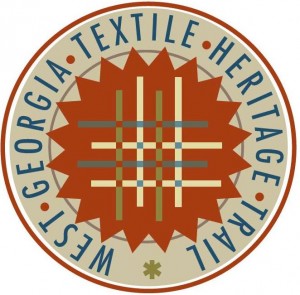MENU 800.444.1834
Visitor Guide
West Georgia Textile Heritage Trail
West Georgia Textile Heritage Trail
Learn about the West Georgia Textile Heritage Trail through the stories that connect our communities. Mill villages recall a time where everyone lived, worked and played in the same community. Work truly was an extension of family, where mill towns offered workers well-paying jobs, good housing and access to a variety of family and community resources. The West Georgia Textile Heritage Trail celebrates and shares these stories.
Textile Heritage Rome & Floyd County
Riverside Mill Village
Chatillon Corporation Silk Mills of Milan relocated to Rome in 1928 and produced rayon, a synthetic fiber that emulated silk. The Riverside Mill Village also known as Celanese was a neighborhood of about 500 brick veneer homes constructed by local developers to provide housing for mill workers. The neighborhood still thrives today even after the company shut down in the late 1970s. The neighborhood has adapted to support a diverse community of residents. Learn more about it’s unique history.
Lindale Mill Village
In 1896, Massachusetts Mills opened in Lindale and was one of the largest textiles producers in Georgia. The mill which manufactured denim, was later sold to Pepperell Manufacturing in 1926 and closed after 105 years of production in 2001. Much work has been completed by local non profit, Restoration Lindale to preserve, promote and restore the surrounding area where locals are committed to ensuring the community thrives. Most recently the mill has been used for movie and video productions. Community residents still celebrate annually with the Star Lighting Ceremony at the mill, a Christmas tradition started by mill workers. Learn more.
Shannon Mill Village
Located in Shannon, the mill closed in 2004 and was operated by many owners throughout it’s history to include Brighton, Burlington, Klopman and Galey and Lord. The Watters District Council for Historical Preservation meets regularly to forward preservation efforts.
 Textile Trail Stories
Textile Trail Stories
Read the stories shared by the communities who make up the textile trail and find out about events to help you explore the area’s textile heritage. Learn more.
